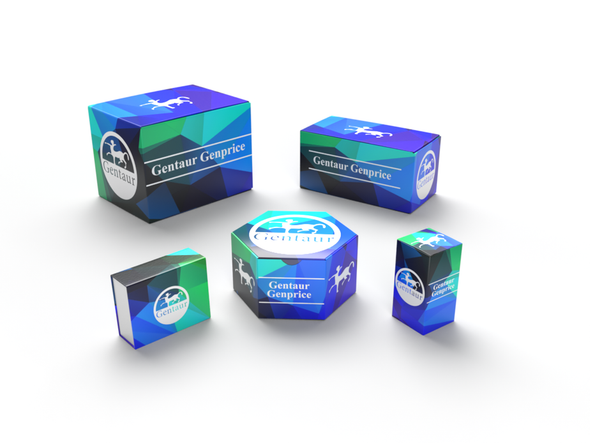Description
CUL1 Antibody | 58-403 | Gentaur UK, US & Europe Distribution
Host: Rabbit
Reactivity: Human
Homology: Predicted species reactivity based on immunogen sequence: Mouse
Immunogen: This CUL1 antibody is generated from rabbits immunized with a KLH conjugated synthetic peptide between 680-708 amino acids from the C-terminal region of human CUL1.
Research Area: Cancer, Cell Cycle
Tested Application: WB
Application: For WB starting dilution is: 1:1000
Specificiy: N/A
Positive Control 1: N/A
Positive Control 2: N/A
Positive Control 3: N/A
Positive Control 4: N/A
Positive Control 5: N/A
Positive Control 6: N/A
Molecular Weight: 90 kDa
Validation: N/A
Isoform: N/A
Purification: This antibody is purified through a protein A column, followed by peptide affinity purification.
Clonality: Polyclonal
Clone: N/A
Isotype: Rabbit Ig
Conjugate: Unconjugated
Physical State: Liquid
Buffer: Supplied in PBS with 0.09% (W/V) sodium azide.
Concentration: batch dependent
Storage Condition: Store at 4˚C for three months and -20˚C, stable for up to one year. As with all antibodies care should be taken to avoid repeated freeze thaw cycles. Antibodies should not be exposed to prolonged high temperatures.
Alternate Name: Cullin-1, CUL-1, CUL1
User Note: Optimal dilutions for each application to be determined by the researcher.
BACKGROUND: Core component of multiple cullin-RING-based SCF (SKP1-CUL1-F-box protein) E3 ubiquitin-protein ligase complexes, which mediate the ubiquitination of proteins involved in cell cycle progression, signal transduction and transcription. In the SCF complex, serves as a rigid scaffold that organizes the SKP1-F-box protein and RBX1 subunits. May contribute to catalysis through positioning of the substrate and the ubiquitin-conjugating enzyme. The E3 ubiquitin-protein ligase activity of the complex is dependent on the neddylation of the cullin subunit and is inhibited by the association of the deneddylated cullin subunit with TIP120A/CAND1. The functional specificity of the SCF complex depends on the F-box protein as substrate recognition component. SCF (BTRC) and SCF (FBXW11) direct ubiquitination of CTNNB1 and participate in Wnt signaling. SCF (FBXW11) directs ubiquitination of phosphorylated NFKBIA. SCF (BTRC) directs ubiquitination of NFKBIB, NFKBIE, ATF4, SMAD3, SMAD4, CDC25A, FBXO5 and probably NFKB2. SCF (SKP2) directs ubiquination of phosphorylated CDKN1B/p27kip and is involved in regulation of G1/S transition. SCF (SKP2) directs ubiquination of ORC1L, CDT1, RBL2, ELF4, CDKN1A, RAG2, FOXO1A, and probably MYC and TAL1. SCF (FBXW7) directs ubiquitination of cyclin E, NOTCH1 released notch intracellular domain (NICD) , and probably PSEN1. SCF (FBXW2) directs ubiquitination of GCM1. SCF (FBXO32) directs ubiquitination of MYOD1. SCF (FBXO7) directs ubiquitination of BIRC2 and DLGAP5. SCF (FBXO33) directs ubiquitination of YBX1. SCF (FBXO11) does not seem to direct ubiquitination of TP53. SCF (BTRC) mediates the ubiquitination of NFKBIA at 'Lys-21' and 'Lys-22'; the degradation frees the associated NFKB1-RELA dimer to translocate into the nucleus and to activate transcription. SCF (Cyclin F) directs ubiquitination of CP110 (By similarity) .










